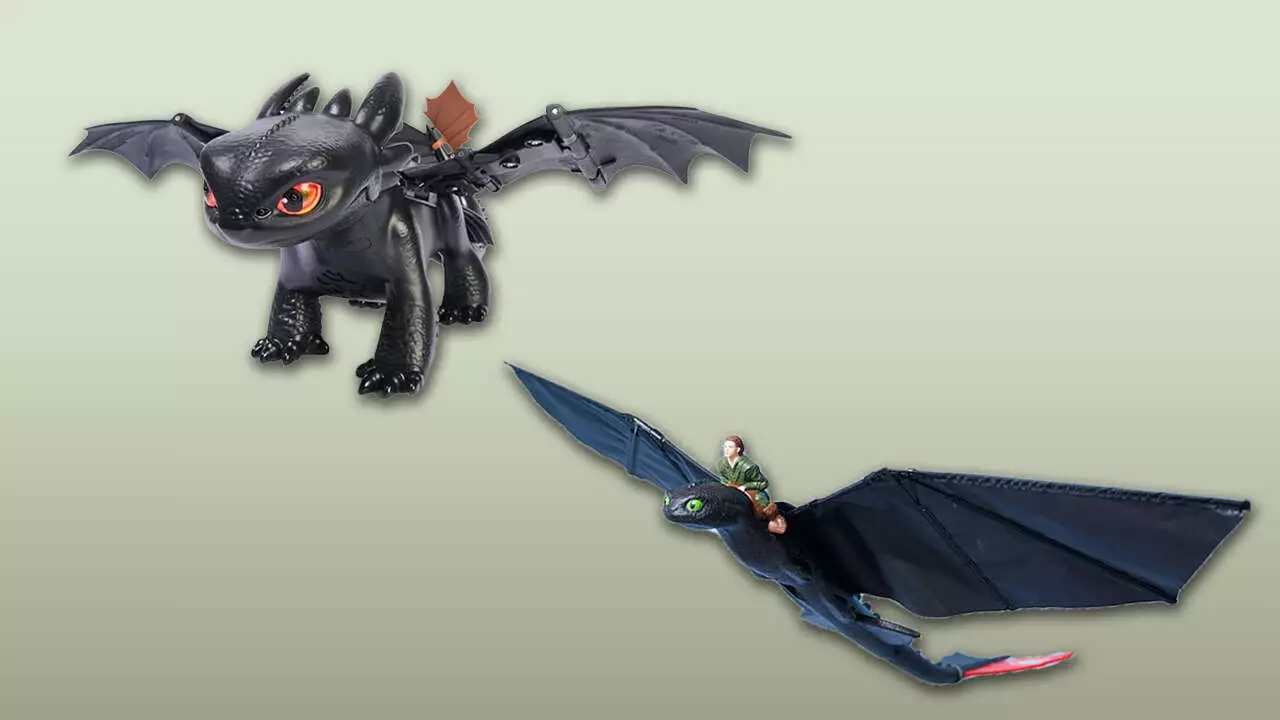This summer, the cinematic universe of *How to Train Your Dragon* experienced a remarkable resurgence with the release of a live-action remake. Far more than just a film revival, it rekindles a sense of wonder and adventure, inviting viewers into a richly imagined world where friendship transcends species barriers. This reimagining does more than entertain; it challenges audiences to view complexity in relationships and to question preconceived notions about loyalty and acceptance. Such storytelling powerfully reinforces the idea that understanding and trust are foundations for meaningful connections, making this film installment not just a spectacle but a catalyst for introspective reflection.
However, the true impact extends beyond the silver screen. By integrating cutting-edge toys and collectibles inspired by the film, the franchise effectively bridges the gap between cinematic fantasy and everyday play. These toys serve as portals into the universe—for children and adults alike—fostering a sense of ownership and personal adventure. As a critic, I see this blending of storytelling with tangible, interactive experiences as a masterstroke in immersive entertainment that deserves both praise and cautious critique for its commercial undertones.
Interactive Play: Elevating Childhood Imagination
The emergence of the Tame & Train Interactive Toothless figure exemplifies innovation in toys, merging entertainment with education. It responds to commands with an array of movements and sounds, which can evoke genuine engagement and emotional resonance. This interactivity promotes cognitive skills like listening, following instructions, and problem-solving, making it more than mere distraction. As the toy progresses through trust-building stages, it echoes the film’s themes of friendship and mutual respect, subtly teaching children about nurturing relationships.
Similarly, the Flying RC Toothless, with its impressive wingspan and flapping capabilities, offers a thrilling outdoor experience. This toy doesn’t just mimic a character—it embodies freedom, adventure, and the thrill of flight. The fact that it can stay airborne for ten minutes and is equipped with a remote control underscores its appeal to older children and collectors who appreciate managing dynamic movements. Yet, I am wary that such toys may foster early obsession with control and technology, potentially overshadowing simpler, unstructured play that fuels creativity. The risk lies in how these gadgets might replace imagination with dependency on gadgets, a dilemma that warrants attentive supervision.
High-Flying Excitement and Collectibility
Launching Toothless from a foam cannon adds an element of surprise and physical activity—engaging children in active, kinetic play. This toy’s affordable price point and lightweight design make it an accessible entry into the world of aerial adventure. Its adjustable tail allows for acrobatics such as barrel rolls and dives, further amplifying the thrill of flight. However, the reliance on launch mechanisms and controlled environments highlights a tension between the allure of adventurous play and safety concerns. It’s crucial that parents and guardians ensure open, uncluttered spaces for such activities to avoid accidents.
Meanwhile, the LEGO Toothless set exemplifies the enduring appeal of building and customization in fostering cognitive development. The intricate model with articulated parts and accessories invites dedicated creators to develop patience and fine motor skills. Its current scarcity—sold out at Lego’s online store—might even increase its desirability, turning it into a coveted collector’s item. Yet, I question whether such high-end collectibles risk overshadowing the simple joy of imaginative, unstructured play. Is the obsession with detail and perfection inadvertently suppressing the spontaneous and untamed creativity that childhood typically nurtures? While these sets undoubtedly serve as impressive displays of craftsmanship, they also underscore a commercial push that may commodify childhood fantasies.
Beyond Play: Cultural and Commercial Significance
The release of the *How to Train Your Dragon* steelbook, with its sleek design and bonus features, exemplifies how cinematic art and collector culture intertwine. It transforms a mere film into a tangible artifact, encouraging fans to celebrate their fandom physically. The magnetic medallion and bonus content deepen the engagement, providing collectors and enthusiasts with a sense of belonging and ownership. Nonetheless, critical examination reveals a broader trend: the commodification of nostalgia. While such collectibles can foster community and appreciation for artistry, they may also foster consumerism, encouraging continuous purchasing rather than meaningful interaction with the story.
In essence, *How to Train Your Dragon* continues to embody a compelling narrative of growth, friendship, and bravery—both on-screen and in toy aisles. But the flip side of this commercial success is the risk of diluting authentic experiences with consumer-driven pursuits. As we celebrate these new toys and collectibles, I believe there’s an essential need to balance imaginative play with mindful consumption, ensuring that the franchise’s core message of trust and understanding isn’t lost amid the clutter of merchandise.
Ultimately, this franchise’s power lies in its ability to inspire far-reaching adventures—both digital and physical. However, it’s up to us to ensure that the emphasis remains on nurturing creativity and genuine connection, rather than merely fueling consumerist appetites. The journey with Toothless isn’t just about flying or collecting; it’s about cultivating imagination, empathy, and the courage to explore new worlds—values that every parent, teacher, and fan should cherish and uphold.

